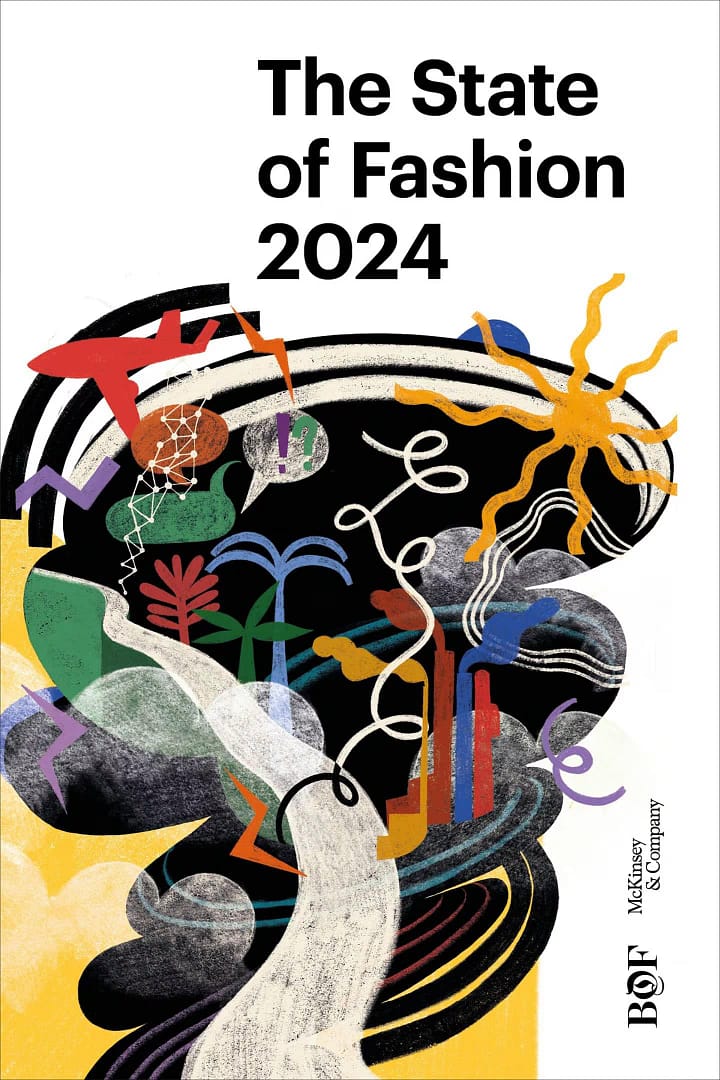The annual State of Fashion 2024 report, published by McKinsey and The Business of Fashion, reveals a fashion market in flux. Despite its resilience, the fashion industry faces profound uncertainty, with experts’ expectations for the year ahead diverging. The report highlights opportunities such as a possible recovery in global tourism, while highlighting challenges such as the climate crisis and the growing disparities between large and small companies.
The Business of Fashion, the website dedicated to the fashion economy, and consulting firm McKinsey published their eighth annual report on the state of fashion worldwide on Wednesday November 29. The document, entitled State of Fashion 2024, reveals a sector in the grip of profound uncertainty.
The report identifies ten crucial areas of focus for the fashion industry over the next year, based on the findings of two global surveys involving industry leaders and consumers. Industry experts are divided in their expectations for 2024, with 26% forecasting an improvement, 37% predicting business as usual, and 38% expecting conditions to worsen.
In recent years, the fashion industry has shown exceptional resilience, achieving a record level of profit in 2022. However, by 2023, it faced persistent and growing challenges. Regionally, Europe and the USA experienced moderate growth throughout the year, while China’s initially robust performance slowed in the second half.
Despite a more positive image of the luxury sector in the first half of 2023, consumer interest in fashion shopping declined across the board in the second half, leading to a slowdown in sales and uneven performance. Even luxury goods felt this deceleration after a prolonged period of beneficial growth.
Uncertainties for 2024
Fashion leaders are preparing for new challenges in 2024, with doubts about the outlook for the coming year. Indeed, the term most frequently mentioned by executives in the survey is “uncertainty”. Consumer confidence will remain fragile, albeit for different reasons in key markets such as the USA, Europe and China. Overall, retail sales growth of 2-4% is anticipated in 2024 for the fashion industry.
With savings opportunities largely exhausted, the focus should now be on stimulating sales growth, fostered by new approaches to pricing and promotion, rather than volume increases. According to the results of the BoF-McKinsey survey, the net intention to implement price increases exceeds 50% across the industry. Cost pressures are expected to ease, with less than 20% of executives anticipating an increase of more than 5% in the cost of goods sold and general and administrative expenses.
Nevertheless, the report also points to potential positive factors. A rebound in global tourism, surpassing 2019 levels by 10%, offers a glimmer of optimism. In addition, generative artificial intelligence is emerging as an opportunity, with innovative applications in product design and development.
AI and climate change
The year 2023 saw generative AI enjoy significant momentum, with $14.1 billion in funding allocated to AI-focused start-ups in the first half of the year alone. However, despite high expectations, executives recognize a significant lack of generative AI-related knowledge and talent within their organizations. While 73% see generative AI as a priority in 2024, only 28% have experimented with it in creative processes, and only 5% believe their employees have the necessary skills.
Read also>CNMI SUSTAINABLE AWARDS 2023: GUCCI SHINES IN FASHION’S CIRCULAR ECONOMY
Featured photo : © Dior







































